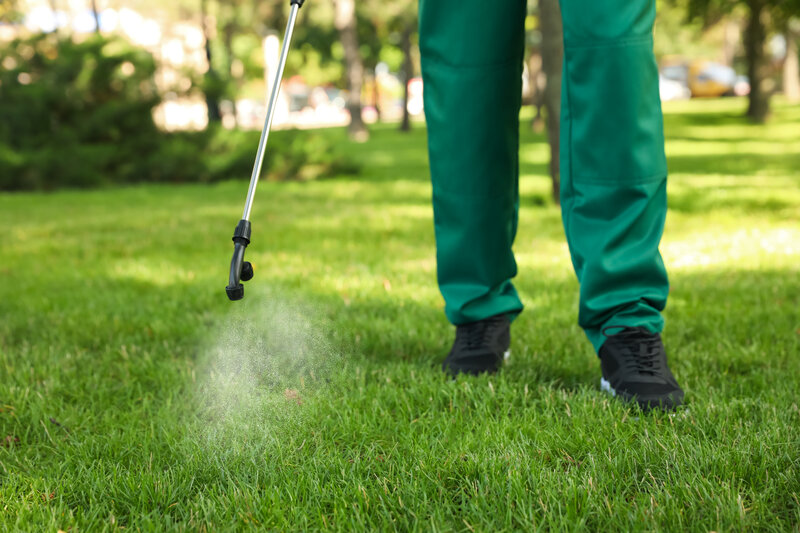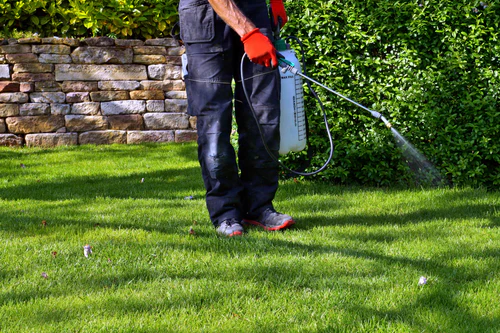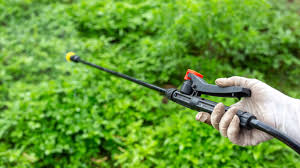Summer is the peak season for lawn enjoyment—but unfortunately, it’s also peak season for lawn insects. From chinch bugs to grubs and armyworms, various pests can quickly turn your lush green yard into a brown, patchy nightmare. Learning how to deal with lawn insects in summer is crucial for maintaining a healthy, thriving lawn.
In this blog, we’ll explore effective lawn pest control strategies, identify common summer lawn insects, and share eco-friendly solutions to keep your lawn bug-free all season long.


Why Lawn Insects Are a Bigger Problem in Summer
The summer months bring warmer temperatures and increased humidity, creating the ideal environment for insects to thrive. Most lawn insects become more active during this period, feeding on grass roots, blades, and stems.
This increased insect activity can result in:
Patchy brown or yellow spots on your lawn
Weakened grass susceptible to disease
Rapid spread of infestation if left untreated
That’s why knowing how to deal with lawn insects in summer isn’t just helpful—it’s essential.
Common Lawn Insects to Watch For
1. Chinch Bugs
These tiny black and white insects suck the sap from grass blades, leaving behind dry, yellowed patches. Chinch bugs are especially active in sunny, dry areas.
2. Grubs
Grubs are beetle larvae that live underground and feed on grass roots. If you notice soft, spongy turf that pulls up easily, you might have a grub problem.
3. Armyworms
These caterpillars chew through grass in large numbers, causing significant damage in a short time. They often attack during late summer.
4. Sod Webworms
These larvae of lawn moths chew grass blades at night and hide in thatch during the day. Brown spots and thinning grass are common signs.
How to Deal with Lawn Insects in Summer: Pro Tips
1. Identify the Pest Early
The first step in lawn pest control is accurate identification. Monitor your lawn regularly and look for signs like:
Chewed grass blades
Brown or dead patches
Presence of moths or beetles
Increased bird activity (they often feed on grubs)
Early detection allows you to use targeted treatments before the infestation spreads.
2. Mow and Water Properly
Overwatering and mowing too short can stress your lawn and attract pests. Here are a few lawn care best practices:
Mow at the correct height (usually 2.5–3 inches for most grasses)
Water deeply but infrequently to encourage strong root growth
Avoid watering in the evening to reduce fungal risk
3. Use Natural Lawn Insect Control Methods
If you prefer an organic approach, try these eco-friendly pest control solutions:
Neem oil: A natural pesticide that deters most lawn insects without harming beneficial bugs.
Beneficial nematodes: These microscopic worms feed on grubs and other soil-dwelling pests.
Diatomaceous earth: Sprinkle this around infected areas to kill insects by damaging their exoskeletons.
4. Apply Insecticides Strategically
If the infestation is severe, chemical insecticides might be necessary. Choose a lawn-safe pesticide that targets the specific insect causing damage. Always:
Follow label instructions carefully
Apply in early morning or late evening
Keep kids and pets off treated areas until dry
For best results, pair chemical treatments with proper lawn care and aeration.
5. Prevent Future Infestations
Long-term lawn health is the best defense against insects. To make your yard less attractive to pests:
Remove excess thatch with regular dethatching
Aerate your lawn annually to promote root health
Use slow-release fertilizers to avoid overgrowth
In addition, regularly inspect high-risk areas such as under trees, near driveways, or around water features where insects like to hide.
When to Call a Lawn Care Professional
Sometimes DIY solutions aren’t enough. If you’ve tried multiple methods and your lawn is still deteriorating, it might be time to call a professional lawn pest control service. Experts can:
Conduct a thorough inspection
Identify pests accurately
Apply commercial-grade treatments
Offer a lawn recovery plan
This is especially helpful for large yards or persistent infestations that come back season after season.
Final Thoughts
Dealing with lawn insects in summer doesn’t have to be a losing battle. With proper lawn maintenance, early detection, and smart treatment strategies, you can protect your grass and enjoy a healthy, pest-free yard all season long.
Remember: the key to lawn pest control is consistency. Check your lawn weekly, stay proactive, and don’t hesitate to seek help if needed.


